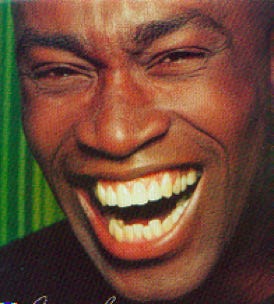The creativity of author, designer, broadcaster Ben Arogundade
Celebrity Biography: 1920s Blues Singer Bessie Smith & The Harlem Renaissance
THE HARLEM RENAISSANCE of the 1920s made a star out of blues queen Bessie Smith, who went on to set the blueprint for the female R'n'B singers of today. By Ben Arogundade. Mar.09.2021.

BLUES IN BLACK & WHITE: Bessie Smith was one of the foremost entertainers of depression era America. The blues performer's bio is laced with fascinating facts about her life, work and sexuality during the Harlem Renaissance of the 1920s and 30s.
OTHERWISE KNOWN AS “The Empress of the Blues”, singer Bessie Smith's biography is one laced with compelling facts, but also tinged with tragedy. Born in Chattanooga, Tennessee on April 15, 1894, she was the daughter of Laura Owens and William Smith, a labourer and part-time Baptist minister. She never knew her father, who died when she was very young. By the age of eight she also lost her mother and brother, after which she was raised by her elder sister Viola.
BESSIE SMITH'S BLUES BIOGRAPHY & FACTS
At the age of nine, Bessie, together with her brother Andrew, took to busking on the street corners of Chattanooga in order to earn money for their impoverished family. She would sing and dance, while her brother played guitar. Her professional career began outright in 1912 when she was hired as a dancer with the Stokes travelling troupe, alongside legendary blues singer Ma Rainey. But it was not until she moved to Philadelphia in 1923 that her own music and recording career took off when she signed to Columbia Records. Her debut release, “Gulf Coast Blues” and “Down Hearted Blues” sold a staggering 780,000 copies in six months.
As a performer, although not a classic beauty, she commanded attention. She was six feet tall, stocky, and weighed 200 pounds. She had a taste for straight-haired wigs made of horsehair, as well as an array of flamboyant hats. She would also wear her own hair, straightened and pressed back against her head.
HARLEM RENAISSANCE PEOPLE
Smith was fortunate to be performing at the height of the 1920s cultural movement known as the Harlem Renaissance, which centred around New York City's famous district of the same name, and had sprouted from the cradle of emancipated, post-war African Americans keen to establish their own creative and cultural values across the arts.
It was during this period that Smith met and married Jack Gee, a local security guard. But right from the start their relationship was stormy, and both of them had affairs. For Smith, star of the 1929 film St. Louis Blues, this included other women, and she was known for her open lesbian relationships. The couple finally parted in 1929 after Gee’s affair with the singer Gertrude Saunders.
HARLEM HEIGHTS
Fortunately, Smith’s personal life did not interfere with her musical success, as she rose to become the most accomplished, and highest paid African American entertainer of the Harlem Renaissance era. She toured extensively, headlining her own shows and even travelling in her own bespoke railway carriage. She would go on to make 160 recordings for Columbia records during this period, working with greats such as Louis Armstrong and Fletcher Henderson.
END OF AN ERA
Tragically, the blues celebrity's career was cut short, both by the onset of the Great Depression, which decimated the recording industry, and by cinema’s invention of “talkies”, which signalled the end for the vaudeville tradition she so relied on. She made her last recording in 1933.
On September 26, 1937, Smith was critically injured in a car accident. She died later in hospital. An estimated 7,000 mourners attended her funeral. She was buried in an unmarked grave until August 1970, when singer Janis Joplin and Juanita Green, Smith’s former cleaner, shared the cost of a headstone.
ABOUT ME
I am a London-based author and publisher, specialising in fiction, non-fiction and online journalism. Discover more about me and my latest projects, at Ben Arogundade bio.


NOCTURNAL BLUES: Singer and entertainer Bessie Smith was one of the stars of Harlem Renaissance era of the 1920s; a portrait of Bessie as a young woman; a promotional poster for Smith's 1923 debut release, 'Gulf Coast Blues'.
*BLUES QUEEN BESSIE SMITH & THE HARLEM RENAISSANCE - ACCORDING TO GOOGLE SEARCH
1,500
The number of people worldwide who Google the phrase, “Harlem Renaissance people”, each month.
100,000
The number of people worldwide who still Google Bessie Smith’s name each month.
*All figures for “Blues Queen Bessie Smith & The Harlem Renaissance - According to Google Search”, supplied by Google. Stats include global totals for laptop and desktop computers and mobile devices.
HARLEM RENAISSANCE QUEEN BESSIE SMITH SINGS ST. LOUIS BLUES - 1929
More About African American Stars Of The Past
© Arogundade, London Town 2025: Registered Office: 85 Great Portland Street, First Floor, London W1W 7LT



